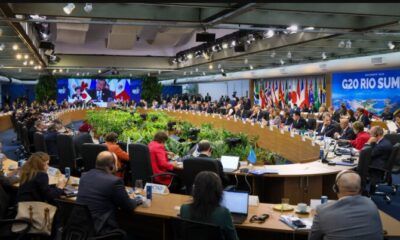Here’s one part of what Nicholson said:
We have some newer Afghan units that we have to partner with very closely. Really they’re just out of recruit training. So I think there’s a wide variety of the Afghan Army experience here in Marja, but I can tell you that I am exceptionally proud of their great service. These guys run to the sound of gunfire. And when I talk to the young Marines, they tell me how very happy they are to have them there. You know, Marines don’t search any of the homes. In an area this large, when you decide you’ve got to search a home, the guys going in are going to be Afghan soldiers. And they’ve done that very well; they’ve earned the trust and confidence of the Marines. And so over all, I think we’re in good shape.
Since these statements were made a decade ago, the Afghan security forces have undoubtedly bore the brunt of the fighting, losing more than 50,000 people after the Pentagon ended “combat operations” in 2014. Different units, especially among the commando forces, are well trained, reliable and somewhat effective on the battlefield. But what Nicholson said on March 4, 2010, to the Pentagon press corps was the perfect example of how the official version of the war in Afghanistan was infected with misinformation (sometimes deliberate, sometimes not) one speech at a time. Here’s how the falsehoods, or half-truths, in Nicholson’s briefing break down line by line.
“These guys run to the sound of gunfire.”
This was an overstatement by our commanding general. On Wednesday I asked one former mortar man from my battalion if he ever saw his Afghan counterparts run toward a firefight. He told me: “Only time I saw them run was when a platoon of them disappeared the night before [the start of the operation] and no one could find them.”
A former senior noncommissioned officer who took part in the battle said that the younger Afghan soldiers were skittish when it came to the fighting unless “the [press] cameras were near them or they wanted to show off.” He added: “However, they had some older guys that were all about the fight. They were old enough to understand why the Taliban were bad and didn’t want them in their country.”
“And when I talk to the young Marines, they tell me how very happy they are to have them there.”
As a young Marine (one of roughly a thousand in my battalion), this was never a sentiment I experienced. We knew little about the Afghan troops, had barely any cultural training and mostly avoided them at all costs, especially with the growing trend of insider attacks. “I’m just glad I’m in weapons company and don’t have to deal with them,” one 19-year-old Marine from my battalion wrote in his journal in January 2010. Another young corporal said, “I always felt a little leery with them around.” Another, a former squad leader in a rifle platoon, said there was “universal distrust and skepticism.” Not exactly a statement of a young Marine happy with his allies.
“You know, Marines don’t search any of the homes. In an area this large, when you decide you’ve got to search a home, the guys going in are going to be Afghan soldiers.”

 Entertainment1 week ago
Entertainment1 week ago
 Tech5 days ago
Tech5 days ago
 Tech5 days ago
Tech5 days ago
 General News3 days ago
General News3 days ago
 Business News2 days ago
Business News2 days ago
 Jobs2 days ago
Jobs2 days ago
 General News3 days ago
General News3 days ago
 Business News2 days ago
Business News2 days ago

